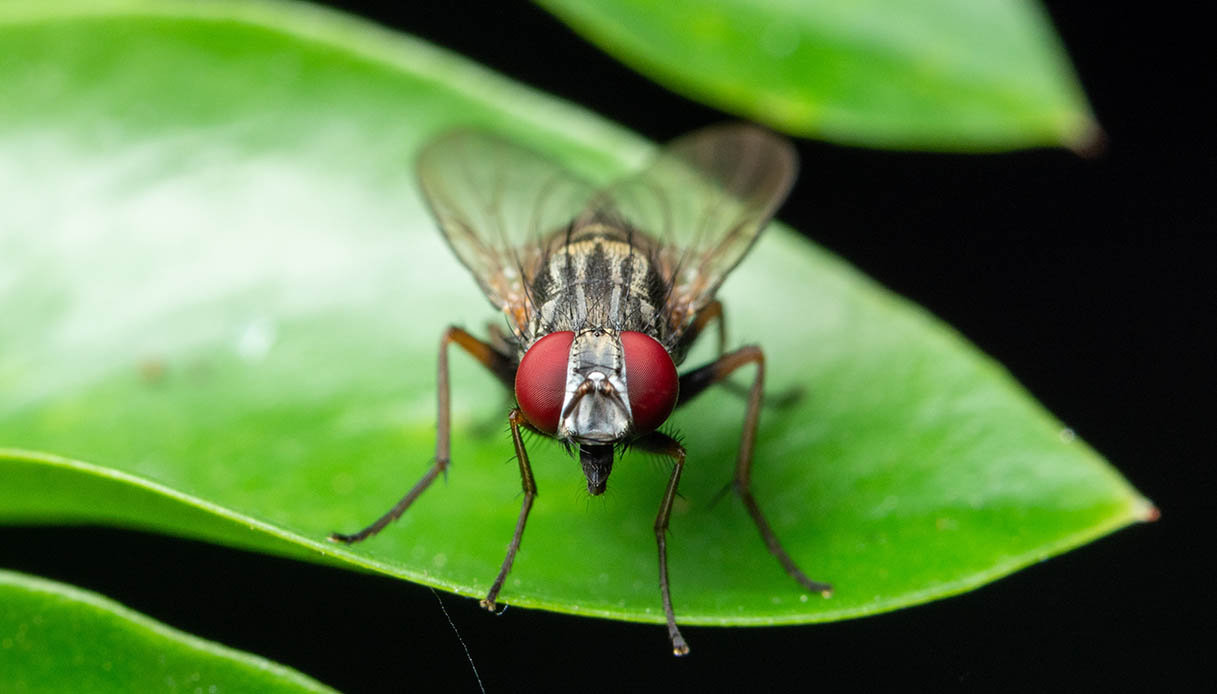Fonte foto: 123rf
They are among the most annoying insects in the world and with the arrival of summer it is inevitable to feel repulsion when they enter the house and fly around it. Today, however, we have good news: science has discovered that there is a definite color that attracts flies and knowing it could give us a little more weapon to keep them away.
Of course, it is not an infallible method and it does not apply to all the (many) species of flies present on Earth, but according to Dr. Roger Santer of the Department of Life Sciences of the University of Aberystwyth, it is the blu. And that’s why it’s a good idea to avoid using its shades in clothing and, yes, even when choosing curtains or soft furnishings.
The fly study in Wales
As we have already mentioned, a team of scientists from the University of Aberystwyth, in Wales, was responsible for this very particular study on flies. In reality, the study started from a slightly more specific question, namely: what brings the flies capable of biting to attack us, when does it happen? What triggers this insect’s “aggressive” behavior?
To find an answer, the Aberystwyth scientists first captured and analyzed a hundred flies of different species, including glossin [comunemente nota come mosca tse-tse], the pappataci and the horsefly. Then, after months of analysis, they developed artificial neural networks that they mimic visual processing of flies.
These artificial neural networks have gradually evolved, behaving just like real flies and have begun to distinguish a series of objects, animals and plants. At first, though, they seemed inexplicably attracted to the color blueto the point where they even stopped caring what the object they were heading towards was.
The attraction towards the blue
This strange behavior has, of course, convinced scientists to investigate to find out more. At first it was assumed that the blue was mistaken by flies for shadow area, but a more in-depth study of the photoreceptor types of the insect eye has led to the idea being shelved. More in-depth analyzes have, on the other hand, led to the conclusion that the color blue represents, for flies, a sort of all-round stimulus, which induces them to think they are facing not only a safe space but also a rich in sources of nutrition.
It is a bit as if we humans find ourselves passing in front of a very bright restaurant where you don’t have to pay for anything: going there would be (almost) natural for everyone, due to the fact that our brain suggests the presence of delicious food in abundance , inside a protected and quiet place, away from any dangers.
The implications of the study
According to Professor Santer, the whole study could be important for two reasons. The first is the possibility of preventing the infestation of flies (even aggressive and biting ones) in various parts of the world where hygienic conditions are scarce. The second, as a direct consequence, is the control and possible limitation and circumscription of diseases such as human trypanosomiasis africana [nota come malattia del sonno].
This disease, endemic in sub-Saharan Africa, still lacks treatment and is usually fatal. Finally, again according to Santer and his team, knowledge of this preference can also help in the management of the housefly, a global parasite that is a carrier of diseases and infections even in the urban-metropolitan context.
